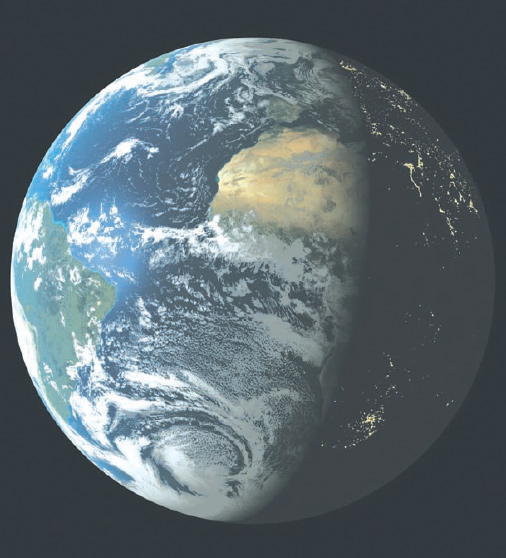You’ve probably heard people say “Earth is a planet” many times, but what exactly does it mean? The simple answer is that a planet is something that goes around a star like our Sun, but if we look a little deeper, we find that there’s much more to it than that.
A planet is one type of world , which essentially means a celestial body that is large enough to visit; other types of world include moons and asteroids. Our planet Earth has a surface shaped by physical processes such as volcanism , in which hot lava erupts to the surface; tectonics , which has shaped mountain ranges and continents; and erosion caused by water, ice, and wind, which can create canyons and build river deltas. Earth is a particularly special planet because it is the only one we know of that has life, making it a living system.
On a deeper level, planets are shaped by gravity . The Sun’s gravity holds Earth in orbit. Earth’s own gravity has shaped its matter into a sphere, which is why Earth is round. And as we’ll discuss later, Earth’s gravity also made Earth hot inside, which is why it has geological processes like volcanism and tectonics.
To summarize, the statement “Earth is a planet” has meaning on at least four different levels:
- Earth is a planet because it orbits (goes around) the Sun.
- Earth is a planet because it is large enough for its own gravity to have shaped it into a sphere.
- Earth is a planet because it is a world with an appearance shaped by physical processes, such as volcanism, tectonics, and erosion.
- Earth is a particularly special planet because it is the only one we know of that is also a living system, meaning that it has life on it.
Video
Viewing the Earth’s Rotation from Space
This NASA video shows the rotating Earth as you might see it in space, but with the rotation sped up. We see the dividing line between daylight and darkness near the left, so we are mostly looking at Earth’s night side, lit up by the lights of human civilization. Worth thinking about: If alien beings could see this view, the night lights would immediately tell them that our planet is home to life and a civilization.
